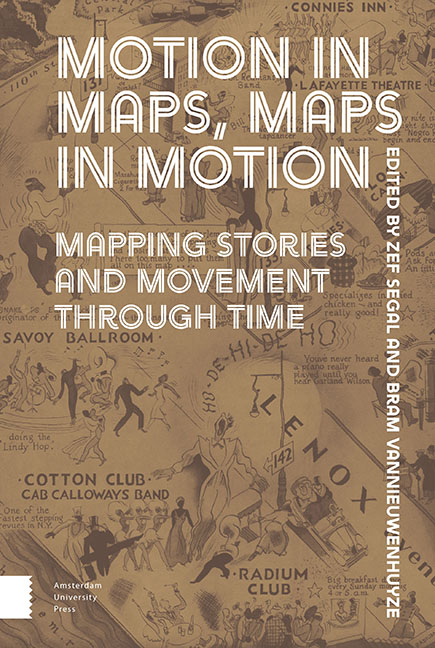Book contents
- Frontmatter
- Contents
- List of Figures
- List of Diagrams
- Introduction
- 1 The New World Map and the Old; The Moving Narrative of Joan Blaeu’s Nova Totius Terrarum Orbis Tabula (1648)
- 2 Entangled Maps; Topography and Narratives in Early Modern Story Maps*
- 3 Flow Mapping through the Times; The Transition from Harness to Nazi Propaganda
- 4 The Tensions of Heterochronicity on Cartographies of Imperial Motion in Japan
- 5 A School Atlas as a History Machine: The Bosatlas Online
- 6 Facebook Cartographies and the Mapping of Local History; Storied Maps from the American Middletown
- 7 ‘Change-of-State’ in the History of Cartography
1 - The New World Map and the Old; The Moving Narrative of Joan Blaeu’s Nova Totius Terrarum Orbis Tabula (1648)
- Frontmatter
- Contents
- List of Figures
- List of Diagrams
- Introduction
- 1 The New World Map and the Old; The Moving Narrative of Joan Blaeu’s Nova Totius Terrarum Orbis Tabula (1648)
- 2 Entangled Maps; Topography and Narratives in Early Modern Story Maps*
- 3 Flow Mapping through the Times; The Transition from Harness to Nazi Propaganda
- 4 The Tensions of Heterochronicity on Cartographies of Imperial Motion in Japan
- 5 A School Atlas as a History Machine: The Bosatlas Online
- 6 Facebook Cartographies and the Mapping of Local History; Storied Maps from the American Middletown
- 7 ‘Change-of-State’ in the History of Cartography
Summary
Abstract
In 1648, Joan Blaeu, cartographer in Amsterdam, issued an enormous wall map of the whole world, entitled Nova Totius Terrarum Orbis Tabula. This article explores Blaeu's world map to discover the worldview it conveys. A close reading of the map, and especially of the hitherto neglected explanatory text below the map, reveals a telling story with a multi-layered message. The communicated narrative can be summarized as pro-Dutch (or actually pro-Holland), Euro-superior, maledominated, in favour of Copernicanism, and optimistic about the progress of knowledge since classical times.
Keywords: World map; wall map; Joan Blaeu; Dutch Golden Age
World maps convey worldviews. They may seem simple grid maps, rationally ordered lands placed on the assumed latitude and longitude, but a world map also forms an argument. Like the Ebstorf map mentioned in the introduction of this book, the world map debated in this chapter presents an argument about knowledge and power. In the mid-seventeenth century, bits of information from all over the world travelled to Amsterdam, arguably the largest information hub of its time and ‘the bookshop of the world’. These bits of information had to be repacked, relabelled, and represented to create knowledge. This knowledge had to be moulded into a form that was understandable and acceptable as a world map for contemporaries. Thus, new and old information found its way into the renowned atlases and wall maps of the most renowned cartographers of the century: Jodocus Hondius, Joan Blaeu, Jan Janssonius, and Frederik De Witt.
World maps represent existing worldviews at the time of production, but also influenced, nuanced, or changed worldviews by omitting or adding boundaries and place names, by using certain languages and colours, by repeating stereotypes, by exaggerating or playing down the size of geographic features. Early modern cartographers were well aware that world maps were distorted representations, not showing the globe ‘as it was’. This is nicely illustrated by Joan Blaeu in an explanatory text entitled Maneductio / Discours below his large wall map, which will be explored in this chapter, the Nova Totius Terrarum Orbis Tabula of 1648 (Figure 1.1):
Together, the earth and the water form a round body, that one cannot represent […] naturally, spherically, like globes […]. The […] approximation is some kind of flat figure pictured as two circles, as one can see on this map.
Information
- Type
- Chapter
- Information
- Motion in Maps, Maps in MotionMapping Stories and Movement through Time, pp. 33 - 56Publisher: Amsterdam University PressPrint publication year: 2020
